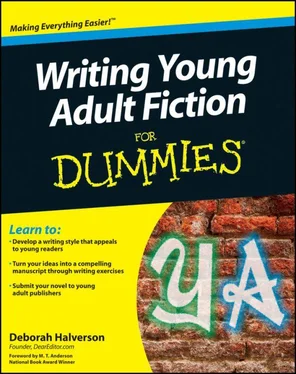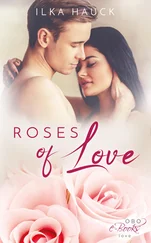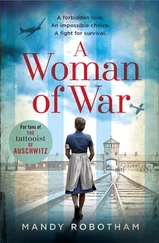1 ...5 6 7 9 10 11 ...121  Understanding the age ranges and categories
Understanding the age ranges and categories
 Comparing teen and tween fiction
Comparing teen and tween fiction
 Choosing your genre and theme
Choosing your genre and theme
A story that thrills a 17-year-old can completely freak out a 9-year-old. Yet young adult fiction encompasses those ages and everything in between. Most books aren’t so expansive. Your goal is to target one specific age group for your story and then sync your themes and conflicts to that group’s maturity level and social concerns. That means you must identify your target readers early in the process. This chapter guides you through that step, charting the standard age groups and genres, factoring in the overlap of tweens and teens, and helping you give common teen themes a fresh twist to grip readers and make your novel stand out.
Identifying Your Teen or Tween Audience
Before you start cranking out chapters, you must be able to name your target audience — your readers’ ages and gender — along with your intended genre, which reflects your readers’ interests and expectations (more on genre in a bit). Simply saying, “I’m writing for teens,” isn’t enough. Several age groups fall under that umbrella, each with its own emotional maturity, intellectual level, and social interests, and you have to be sure that your story ideas, theme, plot, structure, and language all jive with the age range you pick.
All seven of the craft chapters in Part II of this book help you hone your storytelling skills to suit your chosen target audience, but in this section, you take aim at your audience. After all, scoring a bull’s-eye is awfully hard when you’re shooting in the dark.
Choosing your age range
Some people say “young adult fiction” to mean novels written for all young readers, distinguishing these books from novels for adults. However, if you’re talking to someone within the world of young adult literature — librarians and teachers, editors and agents, writers and booksellers — it’s good to distinguish between middle grade (MG) fiction, or tween fiction, and young adult (YA) fiction, or teen fiction. An author who says she’s “writing a YA novel” is writing for teens. She’d specifically state “a middle grade novel” or “MG” if she were writing for tweens.
Everything in this book works for both MG and YA fiction — the craft tips, the submission strategies, the marketing guidance, the whole shebang. The storytelling craft is essentially the same for each category, and the same players in children’s book publishing handle all books for young readers, from toddler board books all the way up to MG and YA novels.
You need to understand both MG and YA so you can function in the biz with the movers and shakers as well as tell your story to your readers in the most effective and affecting manner. I give you the insider’s view of the MG and YA categories in this section.
Breaking down the age ranges
Officially, the two categories of young adult literature — YA and MG — are further split into age ranges. Assigning age ranges to stories helps book-buyers and readers judge the age-appropriateness of the content and the writing. Table 2–1 lays out the age ranges for you.
 You may find a story’s age range listed on a book jacket flap or in its online bookseller listings; you can certainly find it in the publisher’s catalog, which publishers usually post on their websites each season.
You may find a story’s age range listed on a book jacket flap or in its online bookseller listings; you can certainly find it in the publisher’s catalog, which publishers usually post on their websites each season.
Table 2–1 Age Ranges for Middle Grade and Young Adult Fiction
Age Range
Category
Description
Ages 9–12
Middle Grade
Older elementary into middle school, grades 4–7
Ages 10–14
Middle Grade
Middle school into early high school, grades 5–9; these kids may be reading older MG and younger YAs
Ages 12 and up
Young Adult
Older middle school into high school, grades 7–12
Ages 14 and up
Young Adult
High school, grades 9 and up; generally understood to cap at age 17
 Age groupings aren’t hard-and-fast. They can vary from publisher to publisher, imprint to imprint, and bookseller to bookseller thanks to subjective preferences and the ever-morphing readers themselves. The topic of age ranges can make even the most astute publishing exec nutso, so don’t live and die by these. Use them as guidelines, albeit dang good ones.
Age groupings aren’t hard-and-fast. They can vary from publisher to publisher, imprint to imprint, and bookseller to bookseller thanks to subjective preferences and the ever-morphing readers themselves. The topic of age ranges can make even the most astute publishing exec nutso, so don’t live and die by these. Use them as guidelines, albeit dang good ones.
That “and up” designation in the age-range column can get a little hinky. Booksellers often favor an upper age cap so they can help their customers sort the choices. But publishers aren’t crazy about limiting the readership, fearing that a teen who might otherwise enjoy a certain book will pass on it simply because she’s a few months or even a few years older than the top age listed on the jacket. With many teen novels crossing over to adult audiences, an upper age limit can be very limiting indeed.
Even with the “and up” designation, teen fiction doesn’t generally target readers older than 17. Although that, too, isn’t hard-and-fast. Publishers and sellers used to assume that 18-and-ups would be moving on to more adult material. No more. Now there’s a market for YA fiction that delves into those late teen years. The extremely successful Gossip Girl series, for example, features 17- and 18-year-olds and appeals to readers from mid-teens to menopause. And 18-year-old Bella became the most envied girl in America for her love affair and subsequent marriage to the hunky (and inconveniently undead) Edward in the Twilight series. So much for rules.
 The point of age ranges is to give readers a clue about the age-appropriateness of the content and the writing. Each new generation of kids redefines teen, and their literature should reflect this. Your goal as a writer is to do your best to write the most age-appropriate novel you can for the bracket you choose. That’s the way to connect successfully with your readers and position your book in the marketplace.
The point of age ranges is to give readers a clue about the age-appropriateness of the content and the writing. Each new generation of kids redefines teen, and their literature should reflect this. Your goal as a writer is to do your best to write the most age-appropriate novel you can for the bracket you choose. That’s the way to connect successfully with your readers and position your book in the marketplace.
Understanding teen and tween sophistication
Some 12-, 13-, and 14-year-olds read middle grade novels with older themes, and others are already happily immersed in YA. That’s why you see some overlap in the teen and tween age ranges. (Did you notice the overlap of the 12- to 14-year-olds in Table 2–1? This isn’t accidental.) With the wildly varied physical and emotional development of 12- through 14-year-olds and the fact that young readers like to “read up” into age ranges above their own, you never really know who’s going to read your novel. But you can make some pretty good guesses about your audience.
 The shift from tween to teen sophistication starts happening around age 12. Here’s how tweens and teens generally differ:
The shift from tween to teen sophistication starts happening around age 12. Here’s how tweens and teens generally differ:
 Tweens (ages 9 to 12):Typically, tweens are focused inward, with conflicts stemming from that. They’re struggling to find out who they are, first and foremost, and their book choices reflect that.
Tweens (ages 9 to 12):Typically, tweens are focused inward, with conflicts stemming from that. They’re struggling to find out who they are, first and foremost, and their book choices reflect that.
 Teens (age 13 onward):Teens are starting to look outward as they try to find their places in the world and realize that their actions have consequences in the grander scheme of life, affecting others in immense ways. These kids want more meat in their stories.
Teens (age 13 onward):Teens are starting to look outward as they try to find their places in the world and realize that their actions have consequences in the grander scheme of life, affecting others in immense ways. These kids want more meat in their stories.
Читать дальше
Конец ознакомительного отрывка
Купить книгу

 Understanding the age ranges and categories
Understanding the age ranges and categories You may find a story’s age range listed on a book jacket flap or in its online bookseller listings; you can certainly find it in the publisher’s catalog, which publishers usually post on their websites each season.
You may find a story’s age range listed on a book jacket flap or in its online bookseller listings; you can certainly find it in the publisher’s catalog, which publishers usually post on their websites each season. Age groupings aren’t hard-and-fast. They can vary from publisher to publisher, imprint to imprint, and bookseller to bookseller thanks to subjective preferences and the ever-morphing readers themselves. The topic of age ranges can make even the most astute publishing exec nutso, so don’t live and die by these. Use them as guidelines, albeit dang good ones.
Age groupings aren’t hard-and-fast. They can vary from publisher to publisher, imprint to imprint, and bookseller to bookseller thanks to subjective preferences and the ever-morphing readers themselves. The topic of age ranges can make even the most astute publishing exec nutso, so don’t live and die by these. Use them as guidelines, albeit dang good ones. Tweens (ages 9 to 12):Typically, tweens are focused inward, with conflicts stemming from that. They’re struggling to find out who they are, first and foremost, and their book choices reflect that.
Tweens (ages 9 to 12):Typically, tweens are focused inward, with conflicts stemming from that. They’re struggling to find out who they are, first and foremost, and their book choices reflect that.










